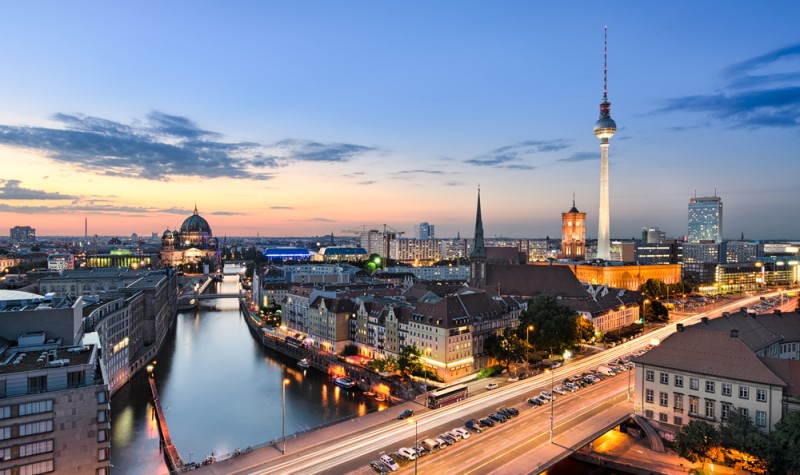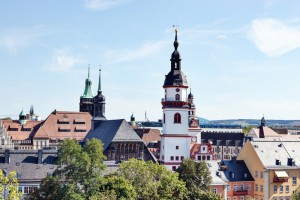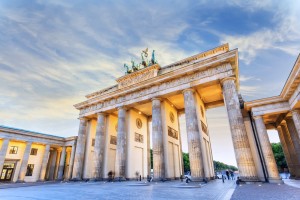Around the World in a Dozen Properties (Part 2): How to get in on the German Property Juggernaut

Featured in this month’s Master Investor Magazine.
This is the second in a 12-part series of articles by Swen Lorenz, reporting on easy-to-access investment opportunities in high quality real estate around the world. This month, Swen has travelled to Germany to seek out an investment suitable for private investors.
You’d have to have spent the last few years under a rock not to have heard of Germany’s booming property market. After many years of being ignored by real estate investors, since 2005 the German market has come onto its own.
Prices for residential property in some areas of Berlin have risen by a factor of 4-5 over the past decade; Munich can now keep up with some of the priciest real estate locations in the world; and the country has been discovered by private equity investors, such as British firm Terra Firma, which bought a six digit number of apartments across the country, but has since then moved on through floating them on the stock market.
I’m here to investigate whether or not it’s still a good time for private investors to invest in this market.
Some common misconceptions about the German market
Investors interested in property investments in Germany need to keep in mind just how large and diverse the country is. In a country with 80 million residents, which previously was split into two separate nations, you inevitably end up having a broad spectrum of property sub-markets. Some do not lend themselves to property investment at all, and it is quite likely that the percentage of such unsuitable locations is much bigger than is widely believed.
The country has a lot of rural areas and mid-sized cities that labour under continued structural weaknesses, particularly ageing populations. In a growing number of these areas, there are now tendencies towards negative population growth, with the young leaving for the large urban areas and the old remaining behind – which becomes a self-reinforcing cycle that is hard to break. In Chemnitz, the third largest city of the state of Saxony with 240,000 residents, a staggering 30,000 apartments are already standing empty. The Government is now discussing large-scale demolition work to deal with the issue. You wouldn’t want a property promoter to sell you an apartment in an area that has a bleak economic future – and there are many such places!
A large-scale study estimated that only 20% of Germany’s residential property has any prospect of increasing in value by more than the rate of inflation over the coming 20 years. That renders the other 80% of the country entirely uninteresting for investment purposes.
Also, don’t under-estimate how taxes, bureaucracy and regulation can affect your investment. Germany is a country of traditionally strong protections for tenants. The booming property market is great for investors, but 58% of Germans still rent rather than own. The majority feels left out and will fight increasing prices and rents in the poll booths. Even now, regulation makes it difficult to get rid of tenants that have turned into a problem. Imagine owning a property and not just ending up with a tenant from Hell, but also finding out that the law is basically set against you.
Some areas remain attractive for the long term
No matter how strong Germany is economically, its property market is anything but a one-way street. As a matter of fact, between 1975 and 2003, inflation-adjusted property prices in Germany didn’t go anywhere. Just like with any other market, it’s important to get both investment quality and timing right.
The number one real estate location to look at in Germany is Berlin. A quarter of a century after the Wall came down, Berlin has turned itself into an edgy and vibrant global capital with an interesting historic and cultural legacy. If you visit for a weekend, you’ll find majestic historic architecture across the entire city centre, newly gentrified apartment blocks in areas that were previously occupied by communist flats and buildings from the Third Reich – and there are still countless construction cranes foresting the skylines, indicating that more change is still to come.
Berlin experienced a first wave of foreign buying between 2005 and 2007. After a temporary dip during the financial crisis, these foreign buyers have now returned. Their favourite investments are apartments in the fashionable Mitte district, where foreigners make up 70% of all transactions. Brits and Russians account for a substantial part of these transactions, the latter together with Ukranians and other Eastern Europeans who are looking for a safe haven destination. Mitte is also a no-brainer for expats who actually want to live in Berlin.
In the Mitte district, prices have now risen to a level where some high-end appartments are changing hands for nearly EUR 20,000/sqm, which is near the rate for similar locations in other large capitals. However, Berlin as a whole is still cheap, and that’s what investors should pay attention to.
Across the entirety of Berlin, residential property is priced at an average of EUR 2,000 to EUR 2,500 per square metre. That’s just a third of what’s being paid in London or Paris. In terms of youthful population, economic vibrancy, and cultural offerings, Berlin is nearly certain to eventually catch up with Paris and London. That’s where the opportunity lies.
Already a sought-after location for start-ups, Berlin will eventually succeed in what it has utterly failed at thus far. The city’s average income is currently 8% below the national average, which of course also hinders price growth for residential property. Of the 30 companies making up the German DAX index, not a single one is domiciled in Berlin! Thanks to the German Government’s commitment to continue to pump billions of Euros into developing the country’s capital into a major European hub, that will change eventually. Unemployment in Berlin is still higher than the national average, but economic growth is also outpacing the national rate. Berlin will eventually become an economic powerhouse; it’s only a matter of time.
Whereas 42% of the population in Germany as a whole owns a property, in Berlin the figure is currently only 15%. That statistic only has one way to go with the increasing economic development of Berlin. A growing culture of ownership always contributes to price growth, and helps stabilise a market during economically difficult periods. In essence, the macro trend is clearly in favour of long-term value appreciation.
How to get in on the Berlin investment opportunity
Buying your own apartment in Berlin is an option, especially given that the cheapest apartments are available from just EUR 100,000 upwards and financing is not hard to get. However, very few people want the hassle of looking after tenants in another country, with a different language and legal system.
One alternative is to buy into one of the listed residential property companies. These are mostly the result of some large-scale privatisations of residential property portfolios in the 1990s and 2000s. The German national railway, Municipal governments and some large corporations historically held huge property portfolios, and eventually decided to sell them. They first ended up in the hands of private equity investors, and later found their way onto the stock market.
Among the biggest such companies is Deutsche Wohnen (literally: German Living), which owns and manages 147,000 flats and 2,000 commercial units.
Unlike many other such companies, DW has a clear focus. 73% of the entire portfolio – i.e. 106,000 apartments – are located in Berlin. More than 87% of the portfolio is in locations that are dynamic growth regions, with an additional focus in and around Hanover, Frankfurt, and Cologne/Bonn.
Buying shares in DW offers easy access to the Berlin opportunity. It takes away the hassle of individual ownership of property, and instead gives investors access to the efficiencies that only a large real estate holding has when it comes to managing a portfolio on a day-to-day basis. There is also a high level of liquidity, given the current market valuation of EUR 7 billion.
What’s the downside?
Shares in DW were trading at a significant discount to the underlying net asset value during the times of the financial crisis. In 2007/08, the share price fell from EUR 30 to just EUR 3, showing that even residential property investments can suffer a fair amount of volatility if purchased through a listed company. Since then, the share price has recovered to EUR 25, which is above the current net asset value of approximately EUR 20 per share. Investors are currently so keen on investing in German residential property via the ease of a listed company, that they are willing to pay a premium to get in on the opportunity.
Although prudent investors would obviously prefer to invest at a price that is near (or ideally below) the net asset value, it’s clearly possible that DW shares will continue to rise, given the strong fundamentals of the Berlin market. Equally, a new financial crisis of any kind, such as a collapse of the bond market, could lead to the shares quickly coming off.
The only certainty, it seems, is that Berlin is well on the way to becoming a veritable European capital. If anything, visit for a weekend and witness it yourself! It’s well worth the short flight from the UK.
Next month: Swen will be visiting Hong Kong.


Comments (0)